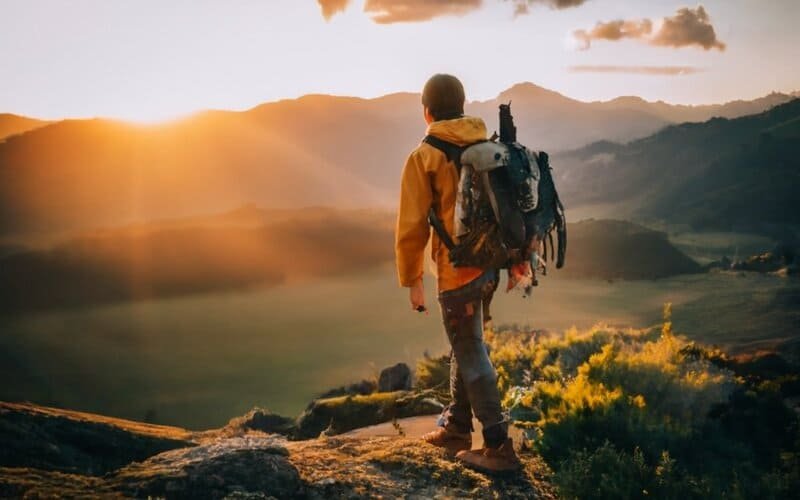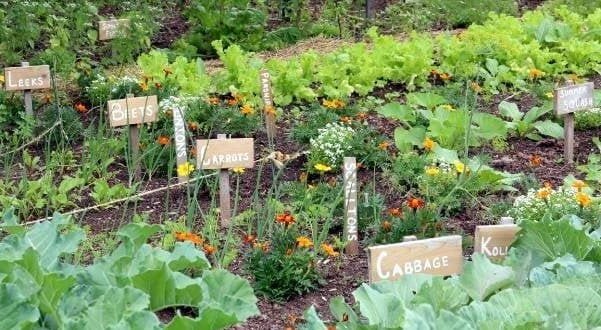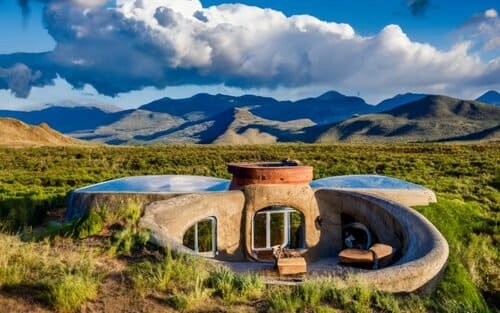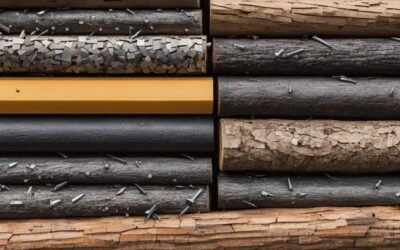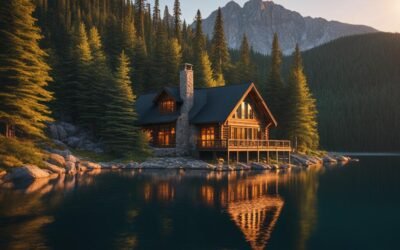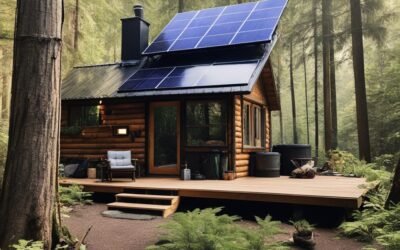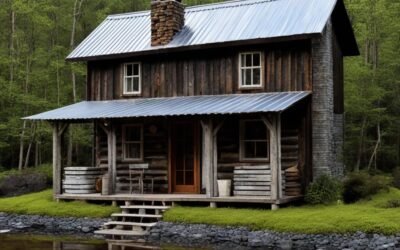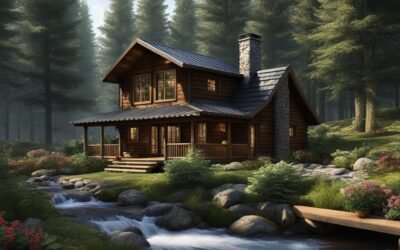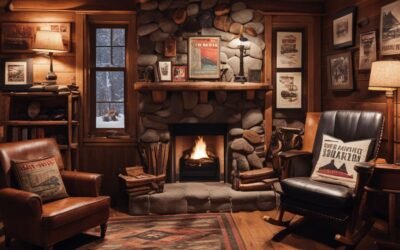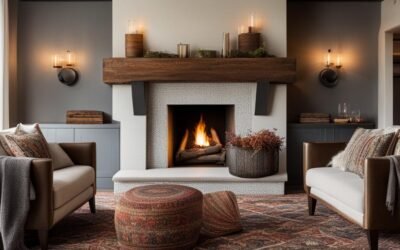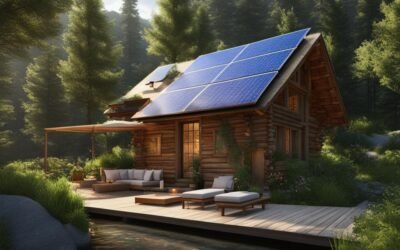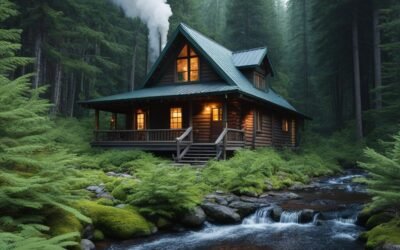Hey there! Are you ready to escape the hustle and bustle of city life? Dreaming of a self-sufficient retreat in nature? Look no further than off-grid cabin kits. These sustainable, DIY cabin kits offer an eco-friendly and affordable solution for those seeking a self-sufficient lifestyle. From cozy tiny homes to spacious cabins, there are options for everyone.
Off-grid living has become increasingly popular as people strive to reduce their environmental footprint and live in harmony with nature. These cabin kits provide everything you need to build your dream off-grid sanctuary. Imagine waking up to the sound of birds chirping, surrounded by breathtaking views, and embracing the simplicity of off-grid living. It’s a lifestyle that offers both fulfillment and freedom.
With off-grid cabin kits, you can design and build your own sustainable oasis. These kits include energy-efficient features, renewable energy options, and eco-friendly materials. From solar power systems to rainwater harvesting, these cabins are designed to minimize your impact on the environment. Plus, building your own cabin allows you to customize it to your preferences and needs.
- Off-grid cabin kits offer a sustainable and affordable solution for self-sufficient living.
- These kits provide everything you need to design and build your own eco-friendly retreat.
- From small and cozy to spacious and grand, there are off-grid cabin kits to suit every lifestyle.
- By embracing off-grid living, you can reduce your environmental footprint and live in harmony with nature.
- Customize your off-grid cabin to fit your preferences and needs, ensuring a truly personalized retreat.
Off Grid Living Hotspots Around the World
Off-grid living has become a global trend, and there are hotspots around the world where people can find like-minded communities and embrace this alternative way of life. Whether you’re looking for off grid living solutions, off grid tiny house kits, renewable energy cabin kits, or pre-built off grid cabins, these locations offer diverse landscapes and resources for self-sufficiency, making them ideal for off-grid living enthusiasts.
In the United States, popular off-grid hotspots include:
- The Appalachian Region: Known for its natural beauty, the Appalachian mountains provide a picturesque backdrop for off-grid living. With abundant resources and a strong sense of community, this region offers a variety of off-grid living options.
- The Pacific Northwest: With its lush forests and renewable energy initiatives, the Pacific Northwest is a haven for off-grid enthusiasts. From Washington to Oregon, there are numerous opportunities to live off the grid and embrace a sustainable lifestyle.
- The Southwest: The Southwest is known for its sunny climate, making it an ideal location for off-grid solar power. States like Arizona and New Mexico offer plenty of sunshine and a thriving off-grid community.
In Canada, attractive off-grid living options can be found in:
- British Columbia: With its stunning landscapes and eco-friendly initiatives, British Columbia offers a wide range of off-grid living solutions. From coastal communities to mountain retreats, there is something for everyone.
- Ontario: Ontario also provides opportunities for off-grid living with its vast wilderness and affordable land options. It’s a great place to build a self-sufficient cabin or invest in a pre-built off-grid home.
In Central America, countries such as Costa Rica and Belize are emerging as destinations for off-grid living. The tropical climate and abundant natural resources make it possible to live off the grid while enjoying a laid-back lifestyle.
“These off-grid living hotspots offer beautiful landscapes, strong communities, and abundant resources for those seeking a self-reliant lifestyle.”
– Off Grid Living Magazine
Steps/Process of Building an Off-Grid Cabin

Building an off-grid cabin involves several important steps and considerations to ensure a successful and sustainable project. Whether you’re planning to build a small retreat or a full-scale off-grid home, careful planning and attention to detail are crucial. Let’s explore the step-by-step process of building an off-grid cabin.
1. Off-Grid Cabin Planning
The first step in building an off-grid cabin is thorough planning. This includes selecting the right land that not only provides access to natural resources like sunlight and water but also complies with zoning and building code regulations. Conducting a thorough site analysis and understanding the local environmental conditions will help you make informed decisions about solar panel placement, water sources, and waste management systems.
2. Off-Grid Cabin Design
Once you have chosen the location, it’s time to design your off-grid cabin. Consider factors like cabin size, style, and layout. Think about how the space will be utilized and design the floor plan accordingly. Optimize energy efficiency by strategically placing windows for natural lighting and ventilation. Insulation and weatherproofing are also crucial considerations to ensure a comfortable living environment in all seasons.
3. Off-Grid Cabin Building Permits
Obtaining the necessary building permits is a vital step in the off-grid cabin construction process. Check with your local authorities to understand the specific permits and regulations required for your region. Building codes for off-grid cabins may differ from traditional construction, so it’s essential to ensure compliance to avoid any legal complications down the line.
4. Off-Grid Cabin Construction
With the planning and design in place, it’s time to start the construction process. Choosing sustainable and recycled building materials can help reduce the environmental impact of your off-grid cabin. Consider using locally sourced materials to minimize transportation costs and support the local economy. Assembling the cabin may involve various tasks including foundation construction, framing, roofing, and interior finishing.
5. Off-Grid Cabin Energy and Utilities
Energy and utilities are critical aspects of off-grid living. Investing in renewable energy systems like solar panels can provide a reliable and sustainable power source for your cabin. Additionally, implementing water collection and filtration systems, as well as eco-friendly waste management solutions, are essential for self-sufficiency. Efficient heating and cooling systems, such as passive solar design or energy-efficient wood stoves, should also be considered.
6. Off-Grid Cabin Cost Considerations
Building an off-grid cabin involves various costs that should be carefully considered in your budget. These include the costs of land acquisition, permits, building materials, labor, and off-grid systems installation. To minimize expenses, consider cost-saving strategies such as DIY construction, utilizing salvaged materials, and exploring financing options for eco-friendly initiatives.
Remember, building an off-grid cabin requires careful planning, a strong understanding of local regulations, and attention to eco-friendly design principles. By following these steps and considering all the necessary factors, you can create a self-sufficient and sustainable off-grid cabin that aligns with your lifestyle and values.
Personal Benefits of Off-Grid Living

Living off the grid has an array of personal benefits that extend beyond the environmental advantages. It empowers individuals with a sense of self-sufficiency and independence, enabling them to rely less on external sources for power and resources. By embracing renewable energy sources and practicing sustainable living, off-grid living promotes environmental awareness and reduces one’s carbon footprint.
Financial freedom is a significant benefit of off-grid living. By reducing energy costs and adopting a simpler lifestyle, individuals can gain greater control over their finances. The ability to generate their own power and reduce reliance on utility companies can lead to substantial savings and long-term financial stability.
One of the most profound benefits of off-grid living is the opportunity to connect with nature on a deeper level. Living in harmony with the natural world allows individuals to appreciate and foster a stronger bond with the environment. Whether it’s waking up to the sounds of birds chirping, stargazing without light pollution, or enjoying outdoor activities surrounded by unspoiled landscapes, off-grid living offers an immersive experience that renews the spirit and nourishes the soul.
“Living off the grid has transformed my life in ways I couldn’t have imagined. My connection to nature has deepened, and I have gained a newfound appreciation for the resources we often take for granted. It has given me the freedom to live life on my own terms, and the sense of self-sufficiency is incredibly empowering.”
– Sarah Thompson, off-grid enthusiast-
When living off the grid, individuals have the freedom to create a lifestyle that aligns with their values and priorities. The personal benefits of off-grid living, including self-sufficiency, financial freedom, and a stronger connection with nature, make it a compelling choice for those seeking a more fulfilling and sustainable way of life.
| Benefits of Off-Grid Living | Description |
|---|---|
| Self-Sufficiency | Reduced reliance on external sources for power and resources. |
| Environmental Awareness | Promoting sustainable practices and reducing carbon footprint. |
| Financial Freedom | Lower energy costs and the ability to generate own power. |
| Connection with Nature | Deeper appreciation and enhanced bond with the natural world. |
Conclusion
Off-grid solar cabin kits offer an excellent solution for those seeking sustainable living and energy independence. These kits provide all the necessary tools and resources to build a self-sufficient cabin that runs on solar power. By harnessing the sun’s energy, individuals can reduce their carbon footprint and embrace a more eco-friendly lifestyle.
One of the key benefits of off-grid solar cabin kits is the ability to achieve energy independence. By generating your own power, you no longer have to rely on traditional electricity sources, reducing your dependence on the grid and lowering your energy costs. This not only saves you money but also gives you the freedom to live off the grid, away from urban areas, in harmony with nature.
Sustainable living becomes a reality with off-grid solar cabin kits. By utilizing renewable energy, such as solar power, you can significantly reduce your carbon footprint. Solar power is a clean and sustainable energy source, making it an environmentally friendly choice. With off-grid solar cabin kits, you can live in a way that aligns with your values and reduces your impact on the planet.
Whether you’re looking to reduce your carbon footprint, save on energy costs, or simply enjoy the freedom and connection with nature that off-grid living offers, off-grid solar cabin kits are an ideal solution. These kits provide a convenient and reliable way to build your own sustainable off-grid cabin and live a self-sufficient and eco-friendly lifestyle.
FAQ
What are off-grid cabin kits?
Off-grid cabin kits are packages that provide all the materials and components needed to build a self-sufficient retreat in nature. They offer sustainable, DIY options for those looking to live off the grid and reduce their environmental impact.
Where can I find off-grid living communities?
Off-grid living communities can be found in various hotspots around the world. In the United States, popular off-grid hotspots include the Appalachian Region, the Pacific Northwest, and the Southwest. Canada also offers attractive off-grid living options, particularly in British Columbia and Ontario. Central American countries like Costa Rica and Belize are emerging as destinations for off-grid living as well.
What is involved in building an off-grid cabin?
Building an off-grid cabin involves several steps and considerations. It starts with planning and selecting the right land that provides access to natural resources and meets zoning and building code regulations. Determining the cabin size and style is important, as well as obtaining the necessary building permits and adhering to regulations. Energy-efficient design principles, sustainable building materials, and renewable energy systems are also factors to consider. Additionally, addressing utilities such as water and waste management is crucial. Finally, cost considerations, budgeting, and cost-saving strategies should be taken into account.
What are the personal benefits of off-grid living?
Off-grid living offers numerous personal benefits. It provides a sense of self-sufficiency and independence, allowing individuals to rely less on external sources of power and resources. It also promotes environmental awareness and reduces one’s carbon footprint by utilizing renewable energy sources and practicing sustainable living. Financial freedom is another benefit, as off-grid living can lead to reduced energy costs and a simpler lifestyle. Additionally, it fosters a closer connection with nature, allowing individuals to appreciate and live in harmony with the natural world.
What are off-grid solar cabin kits?
Off-grid solar cabin kits are practical and sustainable solutions for self-sufficient living. They provide the tools and resources needed to build and power an off-grid cabin, allowing individuals to embrace sustainable living and reduce their environmental impact. These kits offer energy independence, financial savings, and a sense of freedom and connection with nature. Whether you’re looking to reduce your carbon footprint, cut energy costs, or enjoy the independence of generating your own power, off-grid solar cabin kits are a viable option for those seeking a self-sufficient and eco-friendly lifestyle.


